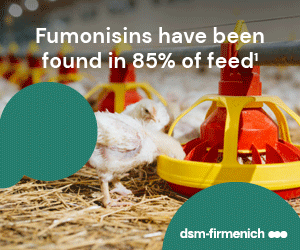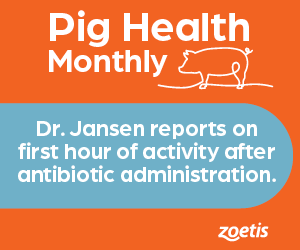



WPX: Why China’s Demand for Pork is Driving the Global Export Economy
China's demand for pork has influenced the rise of the global export economy, but this demand will not last forever. What will the future look like?Part of Series:
< Previous Article in Series Next Article in Series >
China’s elevated buying habits are supporting a number of export economies, including that of the U.S. Without that support, a number of these markets would be in trouble today.
This is a concerning situation, especially considering that China’s elevated demand won’t last forever, due to a number of factors:
- Production costs. While Chinese production costs are high right now, their agriculture industry is modernizing rapidly. As this occurs, production will become less expensive. We’re starting to see signs of this, with the price of Chinese pork production, which has been at $5/kg vs. the global average of $2/kg, is starting to come down.
- Self-sufficiency. Although China relies on the global market for most of its pork consumption, there is political pressure to become self-sufficient, which will reduce Chinese demand for imported goods.
- ASF recovery. ASF has been a major factor in thinning the Chinese domestic herd, which has increased their reliance on imported pork products. As China recovers from ASF, this artificial demand will start to disappear.
- Trade agreements. The idea of free global trade is dying out, and we’re seeing a move toward bilateral FTAs, which will impact not only China but the global trade market as a whole.
While these challenges present few short-term concerns, there will be significant challenges over the mid- to long-term, as there are few alternative markets if China is unable or unwilling to support global pork exports.
At the 2021 World Pork Expo, Rupert Claxton from Gira Food laid out what changes we can expect over the long term as China changes their production and purchasing patterns. Here is a summary of his thoughts.
The aftereffects of COVID-19.
The impacts of COVID-19 on the world pork market are still reverberating to this day. The most notable disruption we saw last year was of the supply chain, particularly when it came to importing U.S. goods into China.
Right now, the biggest challenge is the lifting of COVID-related restrictions, particularly in the food service industry. Although it seems as though these restrictions are lifting across the country, new factors like the Delta variant still leave these questions unanswered.
Another challenge on the horizon is inflation. This creates a lot of uncertainty when it comes to maintaining the demand for U.S. pork, plus the overall impact of inflation on the global economy.
COVID-19 has contributed greatly to the makeup of the current Chinese import market. As the U.S. and the world continue recovering from the pandemic, this will undoubtedly impact Chinese demand.
Resurgence of African Swine Fever (ASF).
One of the main reasons that China has such a high demand for pork is because of the African Swine Fever.
ASF reinfections continue across China to this day, primarily because of a lack of reporting. Without a solid veterinary support inspection structure, there have been untold cases that have slipped through the cracks. This means there is not only an increase in ASF in China, but Vietnam and the Philippines as well.
There’s the added danger of current culling practices, which usually happens at the market. But once ASF pigs are introduced to the market, the infection spreads.
This is contributing to lower hog prices. Many Chinese farmers are preemptively slaughtering their pigs, trying to get rid of them because they might have ASF or they have a neighbor whose pigs caught ASF. This has resulted in a surge of pork into the market, which has pushed the price down.
Unfortunately, this has pushed sale prices below the already high cost of production, which means that Chinese farmers cannot profitably market their pork right now.
Increased production costs
China’s cost of production has come up considerably, because we’ve gone from backyard farms with no overheads to an industry where you’ve got to pay for labor, infrastructure costs, medication and vaccine licenses, loan payments, and more. This has also contributed to the high feed prices.
Currently, there’s a struggle around feed prices, as they are the highest seen since 2011-13. The cost is to the point that in many countries animal production is no longer cost-effective in many regions.
There have been cropping issues around the world, but they’re really a problem in China. The government has removed a corn subsidy, plus there have been issues with foreign army work. On top of that, the government ran short of their corn supply, which led to them buying on the world market in very large volumes.
This all means that prices, while still high, are fluctuating, which is resulting in real uncertainty in the market.
Looking at global production, there’s a problem there. There’s a 12% decline of global pork production, mainly due to China and ASF. We’re expecting a 7% recovery in 2021, because countries are putting more supply to take advantage of China, plus China is rebuilding their own production.
The moral of the story is: China is driving everything, in terms of pricing, supply, and production. As goes China, so goes the rest of the pork market. Which direction that ends up being, we have to watch and see.


























